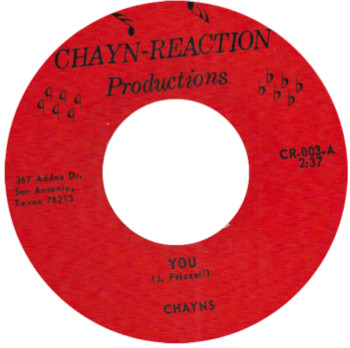
I’ve been reading Jerry Wexler’s excellent, engrossing – but alas, out of print – autobiography, Rhythm and the Blues since I wanted to learn more about his life (catalyzed to do so by his death). Wexler talks about one of his protegés, Bert Berns, the songwriter and producer best known for his work with the Drifters, Van Morrison, Solomon Burke and a slew of others. One of the sources of Bern’s inspiration was Latin music and Wexler shares how some of Bern’s greatest hits, including the Isley Bros. “Twist and Shout” and “My Girl Sloopy” (better known as “Hang On Sloopy”) were all based on the chord progression Bern learned from the best known Cuban guajira of all time: “Guantanamera.”
Here’s the thing about guajiras: they’re a distinctly Cuban style, the term itself refers to a girl from the country and the sound of it is meant to invoke a kind of folksy, romantic and nostalgic mood. It can be a bit confusing though since guajira can refer to either a girl or the song style, therefore when some artists entitle their song, “Mi Guajira,” it’s not always obvious if they’re talking about “my girl” or talking about “my song.”
In any case, when I first started to research the boogaloo and its evolution out of the Afro-Cuban tradition, my mentors like Vinnie Esparza and Chris Veltri tried to explain that a boogaloo rhythm was, in essence, a variation on both cha-cha-chá and guajira and that’s absolutely true. If you listen to either cha-cha-chás or guajiras from earlier in the 1960s, it’s very easy to hear within them the basic structure of boogaloo rhythms as well. As a result, I’ve been a big fan of guajiras because they have that appealing sound I associate with boogaloo, primarily a strong, central montuno riff, often on piano.
What I couldn’t quite figure out though is what exactly separated cha-cha-chás from guajiras and as it was, I was recently hanging out with Joe Bataan and he broke it down (I’m paraphrasing): “the cha cha is upbeat and its usually played in a major key which makes them sound happy. Guajiras, on the other hand, tend to be a little slower but more importantly, the montuno is usually in a minor key, giving it a sadder sound. It’s like blues for Latin.” And suddenly, that totally made sense to me though, given my musicological ignorance, it wouldn’t have occurred to me to think about it in that way.
Back to “Guantanamera.” The basic chord progression here is a I-IV-V; an incredibly common progression that, once you pick up on it, you’ll begin to hear in countless songs, across many different genres. Mathematically, I’m sure there’s an explanation to why the I-IV-V is so pleasing to the ear (at least in a Western context) but it most certainly is part of what gives “Guantanamera” its distinctive melody.
The best known version of the song to most Americans is probably one of Celia Cruz’s versions, especially given her and Wyclef’s collabo from the ’90s. However, the song is attributed to Cuban songwriter JoseÃto Fernández (who would have turned 100 this year), who supposedly originally wrote it back in the late ’20s.
Joseito Fernandez: Guajira Guantanamera
From 75 Years of Cuban Music (Pimienta, 2003)
In terms of evidence of how “Guantanamera” has returned through popular music, the examples are legion.
Richie Valens: La Bamba
From 7″ (Del-Fi, 1958). Also on The Very Best Of.
I can’t say this for certain but “La Bamba” was likely one of the earliest examples of a pop song interpolating the “Guantanamera” chord progression and with this massive hit by the young Richie Valens, songwriters were off to the races…
The Drifters: Sweets For My Sweet
From 7″ (Atlantic, 1961). Also on The Very Best Of.
The Isley Brothers: Twist and Shout
From 7″ (Wand, 1962). Also on The Definitive Collection.
The Vibrations: My Girl Sloopy
From 7″ (Atlantic, 1964). Also The Very Best Of.
This trio suggests how powerfully resonant that progression would become, sticking itself into some of the big pop hits of the time. “Sweets For My Sweet” wasn’t a huge song compared to some of the Drifters later material but “Twist and Shout” (originally recorded by the Top Notes in a version that few would likely recognize) would become gold in the hands of first the Isley Brothers and then, of course, The Beatles. (The song is credited to “Bert Russell” which was a nom de plume of Bert Berns).
As for “My Girl Sloopy,” the world knows it better as “Hang On Sloopy” by the McCoys but Berns brought the “Guantanamera” chords back again when he originally recorded the song for the Vibrations.
The Righteous Brothers: You’ve Lost That Lovin’ Feelin’
From 7″ (Philies, 1964). Also on Very Best Of.
And hell, for good measure, Phil Spector built it into the bridge for one of the biggest pop hits of the 20th century, the Righteous Brothers’ “You’ve Lost That Lovin’ Feelin’.”
Bonus: Jack Costanzo: Guantanamera
From Viva Tirado (GNP, 1971)
The actual song itself has gone through countless versions – this one’s a personal favorite, off of Jack Costanzo’s excellent Viva Tirado album (feat. singer Gerri Woo). Costanzo, aka Mr. Bongo, gives the song a funkier feel but it’s still true to its Cuban roots all the same.



“La Bamba” is a much older song: https://www.youtube.com/watch?v=w3SzJGpFnks. I hope that Richie Valens didn’t claim to have written it.
The official writing credits for Guantanamera were given to Joseíto Fernández. However, I cannot find out who or what entity holds the copyright, as of 2024.